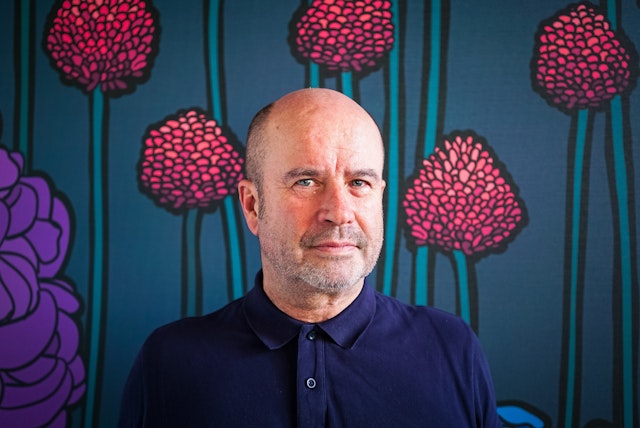‘The line is wherever you can afford to cross’: Creatives discuss Calvin Klein ASA ban
Agency creatives from across the industry weigh in on the ASA’s ban on Calvin Klein ads featuring FKA Twigs.

The poster received two complaints / Calvin Klein
It’s been a busy January for Calvin Klein. First, a new campaign featuring man-of-the-moment Jeremy Allen-White caught fire. Second, the UK’s Advertising Standards Authority (ASA) banned an earlier ad shot by the same photographers featuring model and singer FKA Twigs in response to public complaints.
According to the ASA’s ruling: “The image’s composition placed viewers’ focus on the model’s body rather than on the clothing… the ad used nudity and centered on FKA Twig’s physical features rather than the clothing, to the extent that it presented her as a stereotypical sexual object.”
CK denies that, as does Twigs. Writing on Instagram, she said: “I do not see the ‘stereotypical sexual object’ that they have labeled me. I see a beautiful, strong woman of color whose incredible body has overcome more pain than you can imagine.”
Clearly, there’s disagreement about where the line – or lines – between advertising, public expression and the way that bodies are depicted are drawn. To avoid getting it wrong (either in the form of formal censure or public rejection), how can advertising creatives locate the line? And how much respect should they have for it?
How do you solve a problem like… knowing where the line is?
Rankin, founder, Rankin Creative: “‘What a fantastic day to have eyeballs,‘ was my favorite quote about the Jeremy Allen White pics for CK. I have to agree, my eyeballs were very happy with those pictures. The other people that will be very happy will be the CK team, for getting some very valuable earned media plus a healthy dose of fashion street cred for being risqué. Perhaps that’s the best lesson: push the line, then get someone to complain about it on your behalf.
“To be honest, if it didn’t involve some pretty dubious double standards from the ASA and the two people complaining, it would all be funny. But that’s the game here; in this world of chaos, safe marketing is warm and cuddly. It makes us all feel more comfortable and secure, which is the perfect time to stand out. You just need to hire some pretty good sense checkers, which is one job that it’s necessary to have lots of experience in.”
Advertisement
Regan Warner, executive creative director, McCann London: “The line in advertising is not only blurry but often happily pushed by creatives. The ‘double standard’ debate raises questions. While both were exquisitely captured by Mert & Marcus, the FKA Twigs ad was banned with just two complaints, nine months after it ran, while Allen White’s slow-motion rooftop shenanigans have just set the internet on fire and already gathered a complaint. It’s a waiting game to see if the ASA thinks it also crosses that very subjective line. For now, can we just enjoy the view and that gorgeous… grade.”
Jeff Bowerman, executive creative director, Dept UK: “An old CD of mine used to say ‘sell the sizzle, not the sausage.’ Not sure why that came to mind when thinking about Jezza White in his pants. But perhaps, in our constant chase for the audience’s attention to get our brand’s moment in the sun, it’s no wonder we all fly so very close to the sun. When it comes to the question of where we draw the line on what’s appropriate, what’s safe, what’s too much, what’s taboo – whether you can stomach an ASA ban, upsetting the internet, losing your customers or your clients – ultimately the line is wherever you can afford to cross.”
Mark Izatt, director of creative, Cream: “In advertising, ‘the line’ can be drawn naturally from a basis of strategy, values, and audience understanding. This foundation helps creatives to understand and anticipate the reaction of the desired target audience. The involvement of nudity and risk of provocation is a valid creative choice as long as no one is hurt and there is agency on the model’s part.”
Advertisement
Layla Sanjoori, cultural strategist and semiotician, Space Doctors: “This is a perfect example of how gender empowerment or exploitation is dependent on our unequal access to public and private spaces. While our favorite fictional TV chef is bathed in natural light, proudly showcasing his gorgeous physique in an overtly exposed, open space, the multi-talented FKA Twigs’s natural curves are instead revealed through shadow play with the artist appearing amid a rather dull backdrop. The inherent failure of this presentation results in objectification pressed upon women regardless of intent. As creatives, we have a powerful responsibility to push against these unresolved conflicts while simultaneously shedding a light on their (disappointing) existence.”

Al Young, joint chief creative officer, St Luke’s: “Relevance is transgression. Calvin Klein is a master of this. In the 1990s, it – wholly intentionally – leveraged ‘pornographic cues,’ causing a fame-driving shitstorm. Fashion ad bans bring notoriety and notoriety drives sales. This is not about ‘navigating lines’ but recognizing the line and intentionally riding rough-shod over it. The brand’s first ad ban was in 1980 when Brooke Shields, then 15, told the world that ‘nothing’ came between her and Calvin Klein jeans. Fast forward to December 2023: Was anyone thinking of Calvin Klein as a highly relevant fashion brand? They are now. Bans work.”
Yelena Gaufman, strategy partner, Fold7: “There is no question that this decision reeks of gender bias. We should be policing objectification, not sexuality, and it must apply equally to all people, not just women. FKA Twigs felt she proudly presented her body and her confidence reads loud and clear in the image. If we are to draw lines on sexualization, the right side of that line should be grounded in whether the model/actor has agency over their body. This ban falls on the wrong side and is an act of pure sexism and female body shaming.”
Suggested newsletters for you
Lori Meakin, founder of The Others & Me and exec committee member of WACL: “Judging when a woman is being sexually objectified is about power, character and context. It isn’t simply a question of posture or the amount of skin on show. It’s profoundly ironic that banning the ad has made FKA Twigs feel more objectified than the ad itself ever did. In a world that often uses sex and beauty to disempower women and girls, the intent to better represent all of us is important. But silencing this strong woman’s self-expression feels counterproductive.”

Flora Joll, head of strategy, BMB: ”To put the question another way: what is a stereotypical sexual object? Because there is no universal object: there is one for men and one for women, and the fashion industry highlights the hypocrisy of this perfectly. If you want to capture public attention and get people thinking about your brand for longer than two-thirds of a second, show them difference, like unconventional beauty. Or you can let the garment do the talking or change the setting. Difference pushes at the safely corralled ideas we have of how people should behave on a billboard. It makes us think.”
Jef Loeb, creative director, Brainchild Creative: “Rule #1: the fact that the ASA deemed FKA Twigs’s semi-boob reveal more objectifying than the outlines of White’s butt and family jewels proves the obvious – censorship is always 100% subjective. Often, it reveals more about the censor than the message. Rule #2: who says being censored is always a bad thing in fashion? Rule #3: if bold and provocative is your intent, there’s only one way to get there. Be boldly provocative. And have a backup plan in case Rule #1 kicks in.”
Katie Hunter, co-founder and managing partner, Wonderhood Makers: “The line of judgment – consciously or not – seems to be product. Let’s not forget the Kendall Jenner ads that were not banned, potentially and arguably because she (like Jeremy Allen White) is promoting underwear. But it is much bigger than that. For me, the line is the creativity, the style of the execution, the talent and, most importantly, the intent. It’s a shame that the industry has been unable to see past a couple of complaints to appreciate the creativity and artistry of FKA Twigs here.”
Chris Kubbernus, chief exec and founder, Kubbco: “Understanding the boundaries of social norms is challenging, particularly in advertising where crossing lines is often necessary to capture public interest. FKA Twigs’s critique of the ASA underscores a significant contradiction. It reflects a fundamental yet overlooked aspect of human behavior: our natural tendency to perceive each other through a lens of sexuality and objectification. This instinct significantly influences consumerism and advertising tactics. Recognizing this truth is essential for a realistic approach to understanding how advertising resonates with, and is shaped by, human behavior and societal trends.”
Kindra Meyer, executive creative director, Verb: “The ban is not about the work; it’s about the subject: a woman of color owning her body and power, setting the gaze upon herself and being paid accordingly. Both models were safe, of age and comfortable with the work. The difference is race and gender. Our job is to put the ASA to task for setting such a double standard and keep pushing past archaic cultural norms.”
Daniel Gonzalez, creative director, Remezcla: “To evaluate creativity, the audience is the ultimate cultural barometer of where we stand collectively in the zeitgeist. This is a decentralized sentiment that isn’t dictated by one entity/watchdog. Creatives are not the arbitrators for drawing the line. But we do need to unlearn how to view work through the lens of the white male gaze. This is what leads to double standards of how we view Black bodies. It is our responsibility as creatives to promote equity, recognizing that women harness their own definition of sensuality. We need to scrutinize who is policed, not what. Bell Hooks said it best: ‘When culture is based on a dominator model… it will frame all relationships as power struggles’.”
James Rogala, executive creative director, NMBL: “Sex sells in advertising. It always has and it always will. The only line that needs drawing is a line at creating double standards. Ban it all or ban none of it.”
Neale Horrigan, executive creative director, Elvis: “The ’line’ is something imaginary that we as creatives should always try to step over. Not to offend or outrage, but to seek originality, to stand out and cut through. The really interesting question is, would the FKA Twigs ad have attracted any attention if it wasn’t banned?“
I’m always looking for new names to include in our weekly debates. If you’d like to join the discussion, get in touch: sam.bradley@thedrum.com.

